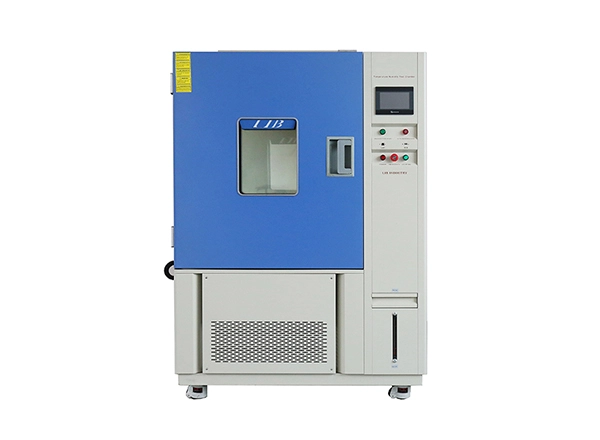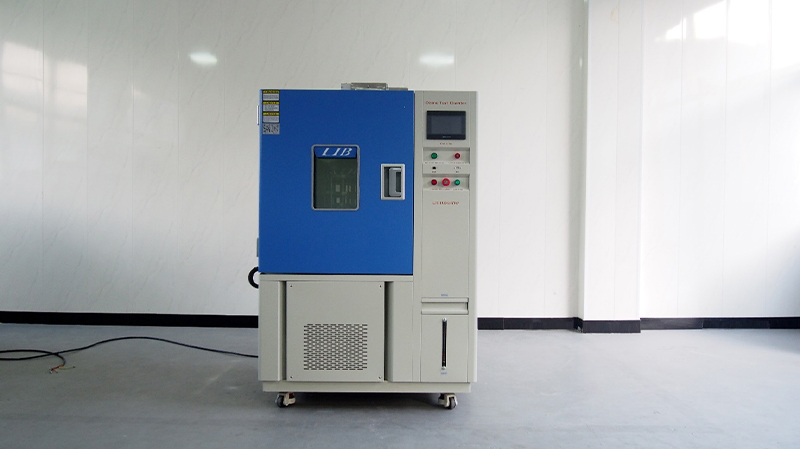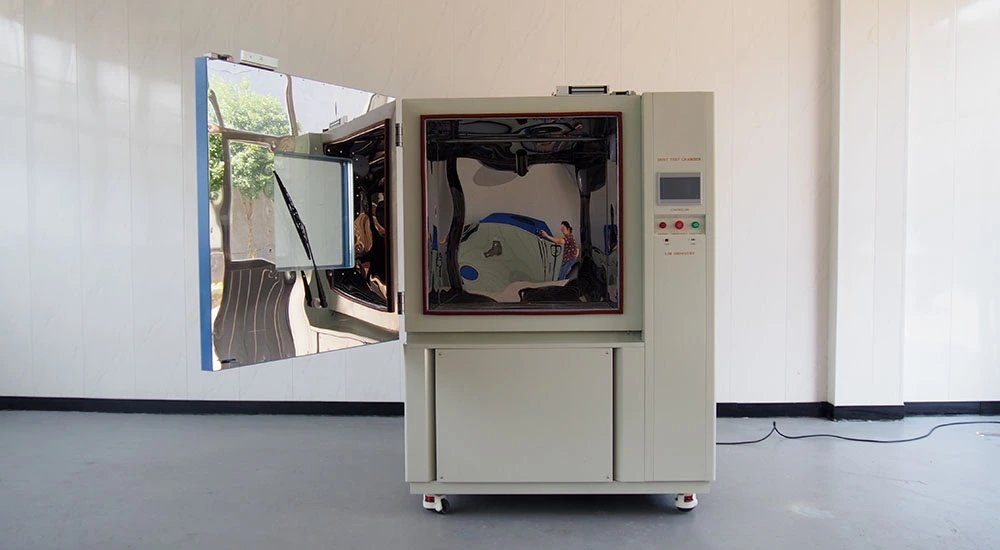

The ozone resistance test chamber is designed for conducting oxidative aging tests on non-metallic materials and sulfurized rubber products. These chambers create controlled environments where materials such as sulfurized rubber, thermoplastic sulfurized rubber, cable insulation sheaths, and other commodities are subjected to specific conditions to assess their resistance to ozone-induced degradation. The ozone resistance test chamber replicates ozone-rich atmospheres, simulating conditions that materials would encounter in real-world environments.

Typically, a Lib Industry ozone resistance test chamber (also known as ozone chamber) comprises several essential components:
1、Main Structure: Constructed primarily from welded steel plates, providing robustness and stability, the main structure encompasses the laboratory interior space, door, observation window, ventilation system, etc.
2、Cooling System: Ozone chambers integrate cooling systems to regulate internal temperatures, ensuring they remain within the desired range. Components of the cooling system usually include a condenser, cooling fan, refrigerant, etc.
3、Heating System: Utilized to elevate chamber temperatures, the heating system replicates high-temperature conditions encountered in real-world applications. Components may include heaters, heating elements, etc.
4、Ozone Generator: Central to the chamber's function, the ozone generator produces ozone gas, essential for creating ozone-rich environments. It typically comprises an ozone generation device, ozone generation pipeline, ozone concentration control device, etc.
5、Control System: Responsible for monitoring and managing test conditions such as temperature, humidity, ozone concentration, etc., the control system incorporates sensors, controllers, displays, etc.
6、Safety System: To ensure the safety of testing procedures, ozone chambers are often equipped with safety features like temperature protection devices, overload protection devices, leakage protection devices, etc.

Regular maintenance is crucial to ensure optimal performance and longevity of ozone resistance test chambers. Here are recommended maintenance steps:
1、Power Off: Prior to cleaning and maintenance tasks, ensure this kind of gas test chamber is powered off, and the power cord is unplugged to prevent accidents.
2、Clean Interior Space: Use a soft cloth or cotton swab dipped in warm water to gently wipe the chamber's interior surfaces, including walls, bottom, ceiling, etc. Avoid corrosive cleaners or strong acid-base solutions to prevent damage.
3、Clean Observation Windows and Doors: Utilize glass cleaner or a mixture of warm water and neutral detergent to clean observation windows and doors. Gently wipe with a soft cloth to avoid scratching.
4、Clean Filters: Regularly clean or replace filters in the ventilation system to maintain smooth airflow, following manufacturer guidelines.
5、Inspect and Clean Drainage Systems: Regularly inspect and clean drainage pipelines to ensure proper functioning and prevent blockages.
6、Inspect and Clean Sensors: Regularly inspect and clean sensors to ensure accurate measurement parameters and prevent interference from dust or dirt.
7、Perform Regular Maintenance: Conduct routine maintenance tasks such as lubricating bearings, inspecting electrical connections, and calibrating sensors according to manufacturer recommendations and usage frequency.
 English
English русский
русский français
français العربية
العربية Deutsch
Deutsch Español
Español


